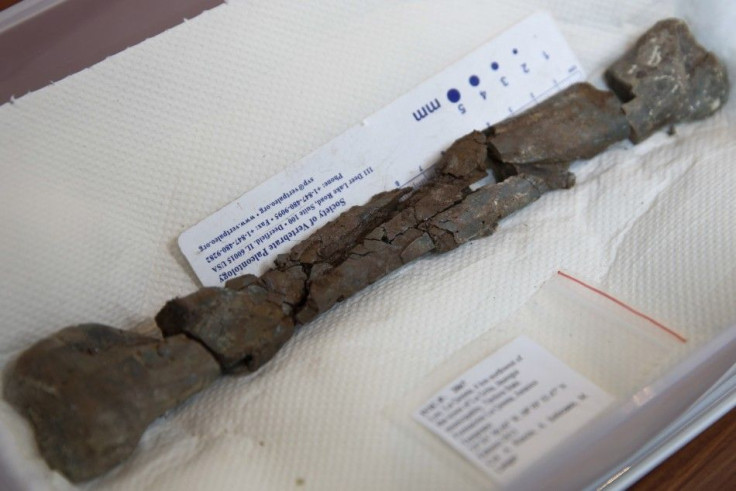500,000-Year Fossil Of A Sloth Found In Argentina

A 500,000-year-old fossil of a sloth was found in the property of an amateur palaeontologist in Argentina. The palaeontologist, Carlos Manduga, found it while digging a well in Mar del Plata, a resort city in the coast of southern Argentina about 400 kilometres south of Buenos Aires.
According to the Daily Telegraph, Carlos Manduga discovered the remains of a pre-historic creature. He said that while cleaning the well at his home, he came across the fossil. A representative from Lorenzo Scaglia Natural History Museum said that Carlos had come across the skull, vertebrae, ribs as well as other remains of the creature.
Analia Veron, the director of Lorenzo Scaglia Natural History Museum, said that the remains of the creature dated back to about 500,000 years and was of a scelidotherium leptocephalum, which is a giant ground sloth. She said that the sloth had huge claws that it used for the purpose of digging deep tunnels and created real underground cities. She added that the extinction of the giant sloth was related to climate change as well as overhunting by human beings around 8000 years ago.
The technical director, Alejandro Dondas, said that the fossils were common but since the skull was discovered with teeth, it was important as it provided the researchers a chance to learn almost everything about the DNA of the sloth.
In 1833 and 1835, Charles Darwin took trips to southern Argentina on the HMS Beagle and came across the first giant sloth fossils called Megatheria, according to a blog called Charles Darwin and Evolution. He found them in a city in Buenos Aires called Bahia Blanca.
The other fossil specimens that he came across were bones of elephant-like mammals, a huge guinea pig and fossils of horses, which were not considered to have lived in the Americas. Darwin went on to make notes about his findings and wrote about the type of sediment that they were found in as well as what other fossils were found there. He made his notes in such a manner so as to make it easy for him to put together clues of the environment that the creatures lived in.




















